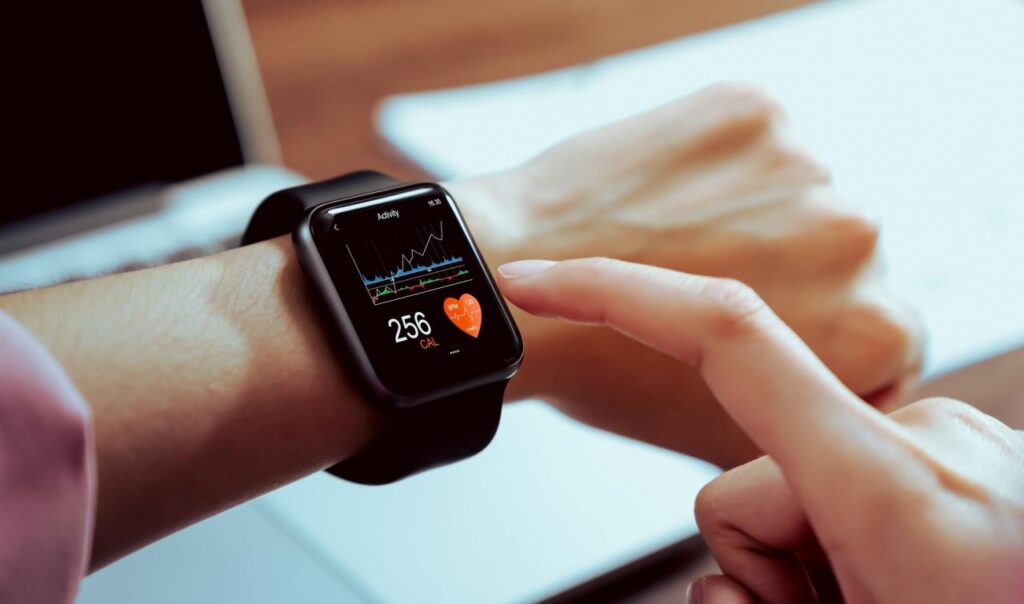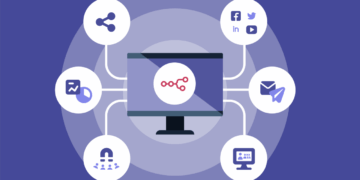In today’s health-focused world, wearable devices—ranging from fitness trackers to smartwatches—are revolutionizing how we monitor well-being. Far beyond just counting steps, modern wearables now measure vital signs like heart rate, blood pressure, blood oxygen, sleep quality, and even stress levels in real time. By integrating advanced sensors, AI analytics, and robust connectivity, these devices are transforming personal wellness, clinical care, and preventive medicine.
This comprehensive article explores the latest in wearable health monitoring: how these devices work, the technology powering them, benefits, real-life applications, potential pitfalls, implementation best practices, and the exciting future innovations ahead.
What Are Health-Focused Wearables?
Health-focused wearables are portable smart devices designed to continuously and non-invasively collect physiological and biometric data. While consumer-grade wearables (like Fitbits and Apple Watches) measure basic metrics, medical-grade devices offer FDA-approved accuracy and often connect with healthcare systems.
Typically, these wearables can:
A. Monitor heart rate, ECG, blood pressure, and oxygen saturation
B. Track sleep cycles, respiratory rate, and step counts
C. Detect stress or mental load via electrodermal and HRV signals
D. Send alerts when abnormal patterns are detected
E. Sync data with smartphones, cloud databases, or medical platforms
Key Technologies Behind Modern Wearables
To deliver accurate and meaningful health insights, wearables combine several advanced technologies:
A. Miniaturized Sensors
-
PPG (Photoplethysmography): Measures blood volume changes for heart rate and SpO₂
-
ECG (Electrocardiogram): Records electrical heart signals
-
Pressure Sensors: Estimate blood pressure via pulse wave analysis
-
Accelerometers and Gyroscopes: Detect movement, activity, and posture
-
Skin Conductance Sensors: Gauge stress via sweat-related electrical changes
B. AI and Machine Learning
ML algorithms distinguish true physiological events from noise (e.g., rejecting motion artifacts), recognize arrhythmias, detect sleep stages, and personalize recommendations.
C. Connectivity and Data Sync
Devices connect via Bluetooth Low Energy, Wi-Fi, and 5G networks to upload data to mobile apps or healthcare platforms.
D. Cloud Computing and Edge Analytics
Edge computing offers instant feedback on-device, while cloud platforms enable deeper analytics, trend detection, and future health forecasting.
E. Battery and Power Management
Wearables use low-power chips and energy harvesting to extend battery life—from days to weeks.
F. Regulatory Compliances
Medical-grade wearables must comply with FDA, CE, and other global standards to ensure accuracy and user safety.
How Wearables Track Vital Metrics
![]()
Here’s a breakdown of common health metrics modern wearables are capable of tracking:
A. Heart Rate & Rhythm
Optical or ECG sensors monitor beats per minute, enable detection of atrial fibrillation (AFib), and assess heart rate variability (HRV) for stress insights.
B. Blood Oxygen (SpO₂)
Pulse oximetry estimates blood oxygen—crucial for respiratory conditions, altitude adaptation, and even COVID-19 monitoring.
C. Blood Pressure
Innovations allow cuffless BP measurement using pulse transit time, increasing convenience for hypertension management.
D. Sleep Tracking
Wearables use motion and HRV signals to map sleep stages—deep, REM, and light sleep—and quantify sleep quality and efficiency.
E. Respiratory Rate
Accelerometer and breathing detection algorithms track respiration—important for sleep apnea and COPD.
F. Stress and Mental Load
Electrodermal activity, HRV patterns, and skin temperature shifts allow devices to infer stress levels and suggest mindfulness exercises.
Benefits of Wearable Health Monitoring
Wearables offer transformative benefits on multiple fronts:
A. Preventive Health Care
They help detect early warning signs—like AFib or hypertension—before acute events occur.
B. Chronic Disease Management
Patients with diabetes, heart disease, or sleep disorders can monitor daily health markers and share them with clinicians.
C. Personalized Wellness
Guided programs for fitness, stress relief, and sleep optimization tailored to individual data trends.
D. Increased Health Awareness
Constant data sharing encourages healthier lifestyle choices and better self-care.
E. Cost Reduction in Health Systems
Remote monitoring reduces hospital visits and enables timely interventions, easing healthcare system burdens.
F. Enhanced Research and Clinical Trials
Large datasets from wearables enable researchers to study long-term health patterns and treatment effects.
Real-World Use Cases
Wearable health devices are already changing health outcomes in many scenarios:
1. Cardiology
-
Early detection of atrial fibrillation and arrhythmias
-
Post-operative monitoring for cardiovascular surgery patients
-
Remote ECG analysis for chronic heart disease
2. Sleep Medicine
-
Diagnosing sleep apnea via pulse heating and SpO₂ dips
-
Tracking sleep hygiene and stage evolution nightly
-
Evaluating insomnia treatment effectiveness
3. Mental Health and Stress
-
Monitoring HRV and skin conductance to detect stress
-
Offering mindfulness or breath-work nudges
-
Assisting in anxiety or depression management
4. Fitness and Sports
-
VO₂ Max and performance tracking
-
Recovery insights via HRV and sleep
-
Custom training plans based on physiological feedback
5. Elderly and Remote Care
-
Fall detection with automated alerts
-
Daily health status visible to caregivers
-
Medication adherence reminders
6. Preventive and Public Health
-
Population-level tracking of activity and health trends
-
Early detection of illness during pandemics
-
Supporting telehealth with user-generated data
Challenges and Limitations
Despite their promise, wearables face several key challenges:
A. Data Accuracy and Validation
Consumer-grade readings can be inconsistent vs. clinical standards. Regulatory approval is still sparse.
B. User Engagement and Retention
Decreased daily usage leads to data gaps. Gamification and intuitive UX are vital to sustained use.
C. Privacy and Security Concerns
Health data is deeply personal. Strong encryption, anonymization, and consent mechanisms are crucial.
D. Regulatory Complexity
Navigating FDA, HIPAA, and GDPR regulations is complex and costly.
E. Integration with Clinical Workflows
Wearable data must sync smoothly with EHR systems and be meaningful for healthcare providers.
F. Health Equity
Cost and tech literacy barriers hinder adoption in underserved communities.
Best Practices for Wearables Deployment
To maximize benefits and ensure trust, follow these guidelines:
A. Choose the Right Device
Pick wearables with validated sensors and appropriate regulatory clearance for intended clinical use.
B. Educate Users
Offer training on correct usage, symptom interpretation, and when to seek medical advice.
C. Secure Data End-to-End
Encrypt data during transmission and at rest. Use secure authentication and comply with privacy regulations.
D. Provide Analytic Transparency
Explain data insights clearly, helping users and clinicians understand what metrics mean.
E. Validate Outputs Clinically
Publish peer-reviewed studies or certifications supporting device accuracy claims.
F. Support Integration
Ensure APIs and EHR connectors allow seamless clinician access to patient-generated data.
G. Build Engagement Loops
Use reminders, visuals, and rewards to motivate users toward consistent use.
The Future of Wearable Health Tech
Wearable technology is evolving rapidly—here’s what’s coming:
A. Advanced Non-Invasive Biomarkers
Next-gen sensors for glucose, hydration, cortisol, and electrolytes without the need for needles.
B. Smart Textiles and Implantables
Integrating sensors into clothing, patches, or under-the-skin formats for continuous monitoring.
C. AI Health Coaches
On-device AI agents offering personalized advice based on multi-metric data fusion.
D. Federated Learning for Privacy
Privacy-preserving ML that learns from wearable data across users while keeping personal data local.
E. Blockchain-Enabled Health Records
Decentralized control of wearable-generated data by individuals, allowing selective access by providers.
F. Augmented Reality Health Alerts
Combining AR with wearables to visualize health metrics or guide exercises in real space.
Conclusion
Wearable devices have entered an exciting new phase—they are no longer passive trackers but vital health assistants capable of real-time monitoring, early warnings, and personalized guidance. This paradigm shift is not only reshaping individual wellness but also healthcare systems globally.
By leveraging cutting-edge sensors, AI analytics, secure connectivity, and regulatory oversight, wearables pave the way for preventive, personalized, and participatory health. For content creators and publishers, health tech is a high-demand topic that drives engagement and AdSense revenue—so now is the ideal time to produce expert-led, optimized content.
Wearables have already begun to transform lives. As technology advances, they will become even more capable, discreet, and impactful—leading us into an era of truly proactive health.








